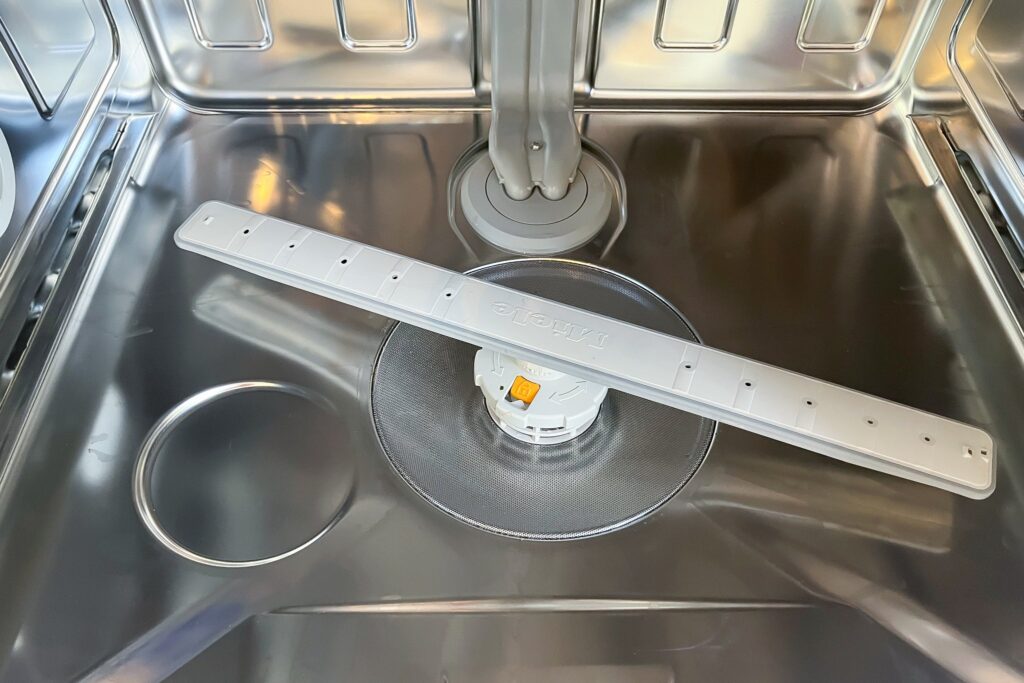How to Deep Clean Your Dishwasher in 7 Simple Steps Leave a comment
Regular cleaning of your dishwasher is essential for keeping it running efficiently and ensuring clean dishes every time. Buildup of food debris, grease, limescale, and mold can lead to foul odors, cloudy dishes, and even appliance breakdown if left unchecked.
Fortunately, cleaning your dishwasher does not have to be complicated or time consuming. With some simple supplies likely already in your kitchen, and following basic cleaning steps, you can easily keep your dishwasher sparkling.
This article will walk through the key supplies to have on hand, and provide actionable instructions for wiping away grime, disinfecting, removing odors, and preventing future buildup. With a routine dishwashing cleaning regimen, you can count on pristine, sanitized dishes for years to come.
Supplies Needed
To thoroughly clean both the interior and exterior of your dishwasher, having the right supplies is key for efficiency and best results. Stock up on these affordable, multipurpose items:
Dishwasher Cleaner
- Formulated specifically for dishwashing maintenance
- Removes grease, limescale, soap scum
- Deodorizes
- Brands like Affresh, Lemi Shine, Cascade, and Finish
White Vinegar
- Acidity cuts through mineral deposits and grease
- Deodorizes musty smells
- Sanitizes
Baking Soda
- Abrasive texture dislodges gunk
- Deodorizes and freshens
Soft Cleaning Cloths/Sponges
- Won’t scratch delicate surfaces
- Enable wiping away dirt
With the above basic cleaning toolkit assembled, the process of deep cleaning and maintaining your dishwasher is straightforward. Continue reading for the hands-on instructions.
Cleaning the Filters

The filters in your dishwasher trap debris, preventing it from circulating and leaving deposits on clean dishes. Over time, chunks of food get caught, and mold growth can occur. Regular filter cleaning is crucial for optimal performance.
- Locate the Filters: Consult your appliance’s manual for the exact location of filters. Most models have a cylindrical shaped main filter at the bottom, accessible near the bottom rack.
- Remove and Rinse Thoroughly: Turn the filter counterclockwise to unlock and lift out. Use warm water to rinse away any loose debris. For more stubborn buildup, use a soft brush while rinsing.
- Scrub Away Lingering Debris: For more stubborn areas of stuck-on gunk like grease or limescale, use a small amount of dishwasher cleaner on a damp cloth to scrub filters manually. Rinse thoroughly after cleaning.
- Replace Filters: Simply place filters back into position, pressed down firmly. Turn clockwise to lock back in place securely. Run an empty dishwasher cycle to clear out any loosened debris.
Wiping Down Interior
While filters trap large food particles, grime still builds up inside the dishwasher’s inner chambers over time. For fresh, residue-free results, periodic manual wiping keeps interior surfaces sparkling.
- Remove Bottom Rack: Take out the bottom rack for unobstructed access to interior bottom and sides. This also allows cleaning of the rack itself.
- Wipe Down Walls and Bottom: Use a soft cloth or sponge dampened with warm water and a small amount of dish soap or cleaning spray. Gently scrub entire interior, rinsing cloth when needed to remove grease and debris.
- Clean Door and Seals: Pay special attention to crevices and seals, as buildup readily occurs. Check under the door lip. Leave door cracked open after running so seals can fully dry.
Replace cleaned bottom rack. An optional step is wiping down exterior surfaces with a stainless steel cleaner for shine.
Running a Vinegar Cycle
For hard water areas especially, mineral deposits from municipal water supplies lead to limescale accumulation over months of dishwashing cycles. White vinegar’s acidic properties cut through this buildup easily via occasional vinegar-only washes.
- Pour Vinegar in Bottom of Empty Dishwasher: Use plain white vinegar – approximately 2 cups. For extreme limescale, you can fill detergent cup with vinegar instead of pouring in bottom.
- Run Hottest Cycle Possible: Vinegar cleaning is most effective when the water temperature is as hot as your dishwasher allows. It may be labeled as “pots and pans”, “heavy duty”, or other terminology by brand.
- Helps Remove Grease and Limescale: The heated vinegar dissolves and loosens the grip of grease and mineral deposits throughout machine. Use every 1-2 months for cleaner dishes.
Baking Soda Treatment
Along with grease and limescale removal, odor elimination is a key benefit of baking soda washes. The abrasive texture scrubs away staining too for a freshened interior.
- Sprinkle Baking Soda on Bottom of Empty Dishwasher: Pour approximately 1 cup of baking soda evenly covering the bottom. For extreme odors, placing some in a small container on the top rack also works.
- Run Hottest Cycle: Like the vinegar wash, the high heat of the hottest setting allows full circulating action of baking soda for maximum odor elimination and cleaning power.
- Freshens and Deodorizes: Baking soda dissolves and permeates all nooks and crannies, absorbing stubborn smells. Should be performed every 1-2 months for lasting freshness.
Preventative Measures
Cleaning your dishwasher regularly keeps everything functioning properly for clean dishes and no foul odors. But taking some simple precautions drastically reduces the cleaning frequency needed.
- Don’t Pre-Rinse Dishes: Scrape large stuck-on debris only. Letting detergent do its job maximizes efficiency. Less food particles means less buildup over time.
- Scrape Large Debris off Plates: While not pre-rinsing with water, a quick scrape of solids into garbage helps decrease wash load. Less debris leads to cleaner interior.
- Run Dishwasher Regularly: Long periods without use allows moisture and growth of mold/odor causing bacteria. Quick washes every 1-2 weeks while not in heavy use keeps machine balanced.
- Use Rinse Aid: Rinse aid helps prevent mineral deposits and speeds drying for cleaner interior between washes.
- Leave Door Open to Dry Out: Cracked door allows air flow to help dry out any interior moisture, preventing mold and odors.
Key Takeaways
- Regular cleaning of dishwasher prevents odor, keeps dishes cleaner
- Key supplies: dishwasher cleaner, vinegar, baking soda, soft cloths
- Clean filters, interior, door seals thoroughly
- Vinegar cycle helps descale and cut grease
- Baking soda deodorizes and freshens
- Preventative measures reduce cleaning frequency needed
Read also:

